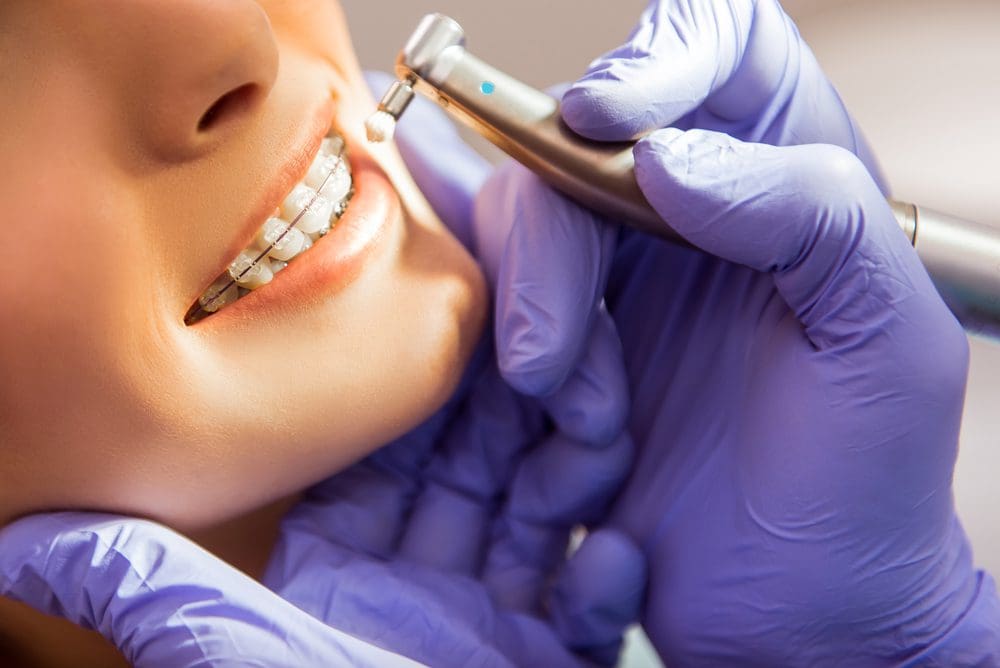How Cumming Orthodontics Addresses Common Braces and Invisalign Worries
How Cumming Orthodontics Addresses Common Braces and Invisalign Worries
Blog Article
Comprehensive Overview to Orthodontics Procedures for Dealing With Dental Imbalances
In the world of orthodontics, the trip to attaining a completely aligned smile includes a myriad of procedures customized to fix oral imbalances. From conventional dental braces to undetectable aligners and even medical options, the area of orthodontics offers a range of solutions to attend to varying degrees of oral irregularities. Recognizing the complexities of each procedure, including their devices, benefits, and possible drawbacks, is critical in making notified choices about one's orthodontic therapy. As we navigate with the thorough guide to orthodontic procedures for dealing with dental imbalances, the elaborate information of each method will certainly unravel, shedding light on the path towards a unified and useful oral alignment.
Orthodontic Procedures Overview

Normal changes and monitoring are critical parts of orthodontic therapy to guarantee progression is on track and to make any needed modifications along the means. By undergoing orthodontic treatments, patients can not only attain a straighter smile however additionally improve their total dental health and wellness and feature.
Traditional Braces: Just How They Work
When considering orthodontic treatments for dental imbalances, conventional braces stand out as a tried and true method for fixing teeth placing. Conventional dental braces are composed of braces, cords, and bands that work with each other to use continual pressure on the teeth, progressively moving them right into the wanted positioning.
One key aspect of how traditional braces job is the procedure of bone renovation. As pressure is put on the teeth with the dental braces, the bone bordering the teeth is improved to support the new tooth settings. This improvement is vital for the lasting stability of the corrected positioning. People will require regular adjustments at the orthodontist's office to make certain the dental braces proceed to apply the appropriate pressure for reliable teeth activity.
Invisible Aligners: Cons and pros
Unseen aligners supply a very discreet and convenient option to standard braces for remedying oral misalignments. These clear, custom-made trays are practically undetectable when used, making them an appealing choice for individuals looking for a more visually pleasing orthodontic therapy. One of the key advantages of invisible aligners is their removability, enabling for less complicated maintenance of oral hygiene compared to traditional braces. Clients can eliminate the aligners before consuming or brushing their teeth, minimizing the danger of food obtaining stuck in the appliance and streamlining the cleansing procedure.

Surgical Orthodontic Options
Surgical treatments in orthodontics present sensible options for resolving complex dental imbalances that might not be effectively solved through traditional orthodontic therapies. While invisible aligners and conventional dental braces can deal with several orthodontic issues, specific instances call for surgical intervention to accomplish ideal outcomes. Surgical orthodontic alternatives are generally advised for severe malocclusions, significant jaw inconsistencies, and situations where the underlying bone framework requires alteration to achieve proper alignment.
One usual medical orthodontic treatment is orthognathic surgery, which involves repositioning the jaws to correct functional issues such as difficulty speaking or chewing. This surgical treatment is commonly done in cooperation with an orthodontist that assists line up the teeth before and after the procedure. Surgical orthodontics may likewise include procedures to expose impacted teeth, remove excess periodontal cells, or improve the jawbone to produce a more harmonious face account.
Prior to taking into consideration medical orthodontic choices, clients undergo an extensive evaluation to determine the need and possible benefits of such interventions. cumming invisalign. While surgical procedure might appear complicated, it can substantially enhance both the function and aesthetics of the smile in instances where traditional orthodontic treatments fail
Retainers and Post-Treatment Care

Failure to conform with post-treatment treatment directions can result in regression, where the teeth gradually move back in the direction of their original placements. Consistent retainer wear, great dental hygiene, and regular oral exams are vital for keeping the outcomes achieved through aligners orthodontic surgical treatment and making certain the long-term stability of the fixed dental placement.
Conclusion
To conclude, orthodontic procedures offer different alternatives for fixing oral imbalances. Typical dental braces make use of steel braces and cords to shift teeth into proper alignment. Unnoticeable aligners offer a more discreet option yet might not appropriate for all instances. Surgical orthodontic options are readily available for extra extreme imbalances. Retainers are generally made use of post-treatment to keep the brand-new placement. On the whole, orthodontic treatments can properly boost oral health and wellness and aesthetic appearance.
As we navigate via the detailed guide to orthodontic procedures for dealing with oral misalignments, the intricate information of each technique will unravel, dropping light on the path towards a unified and functional dental placement. - braces
One of the most usual orthodontic therapies is the use of dental braces, which consist of steel brackets and cords that apply mild pressure to slowly shift teeth right into the preferred placement.When thinking about orthodontic treatments for dental imbalances, standard braces stand out as a tried and true method for remedying teeth placing. Additionally, unseen aligners may not be ideal for complex orthodontic problems that require more substantial teeth movement, as they are commonly recommended for light to modest situations. Retainers are custom-made orthodontic gadgets made to hold teeth in their corrected settings after the conclusion of orthodontic treatment.
Report this page